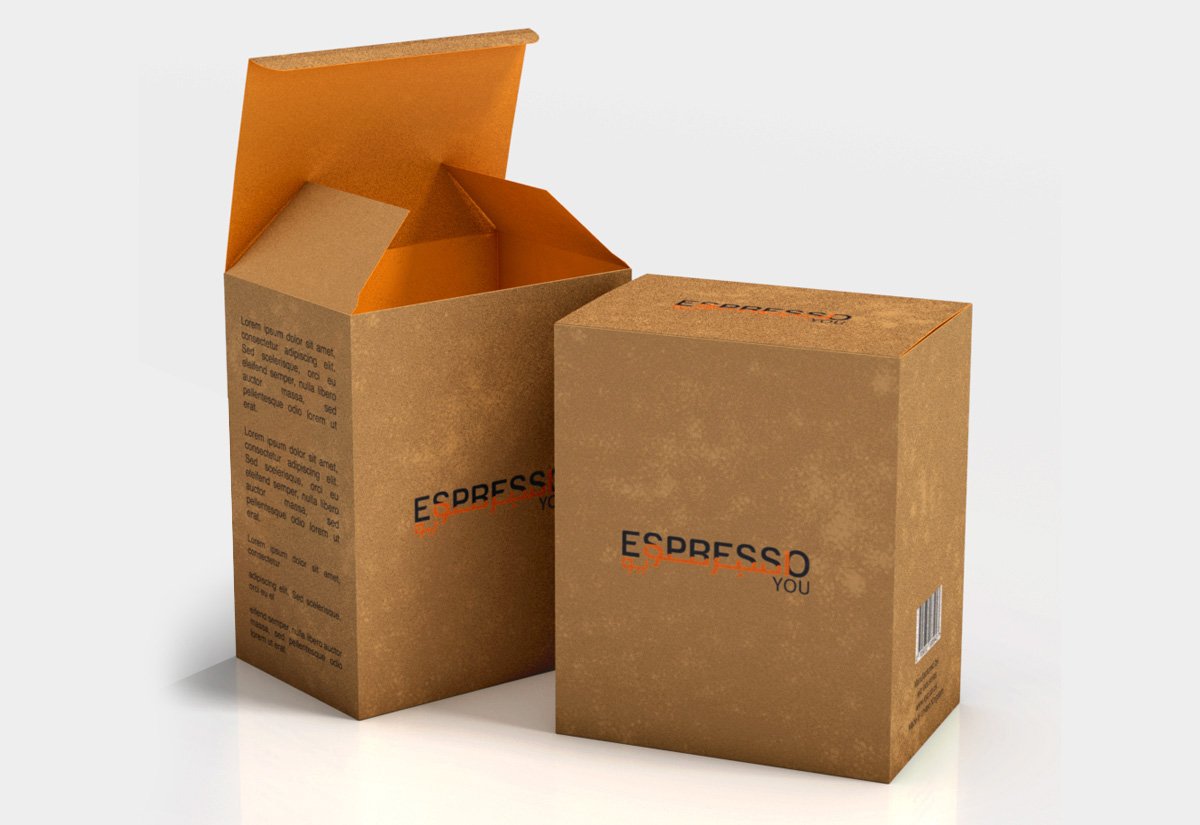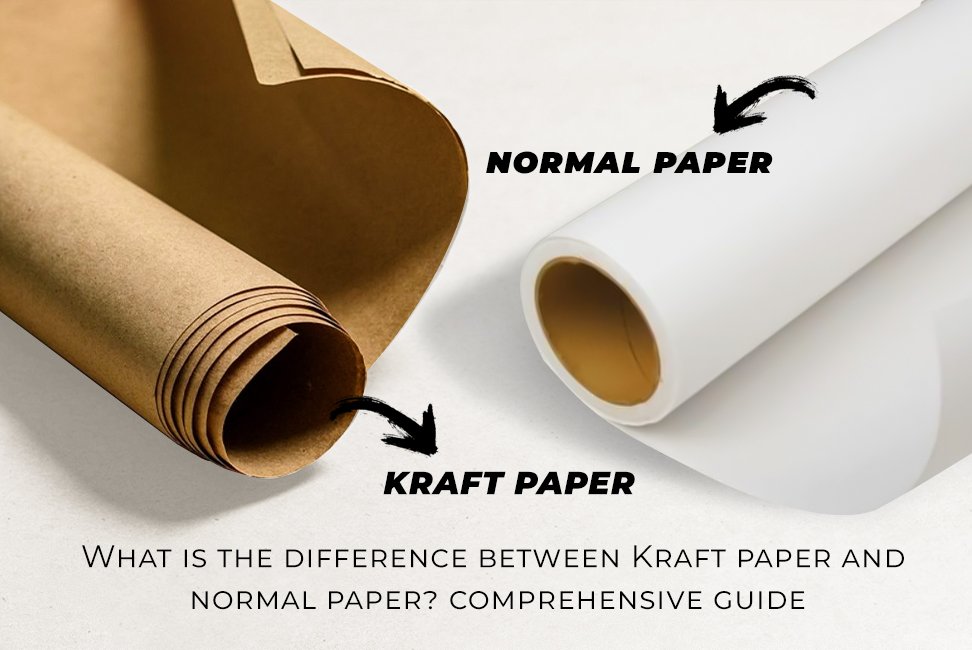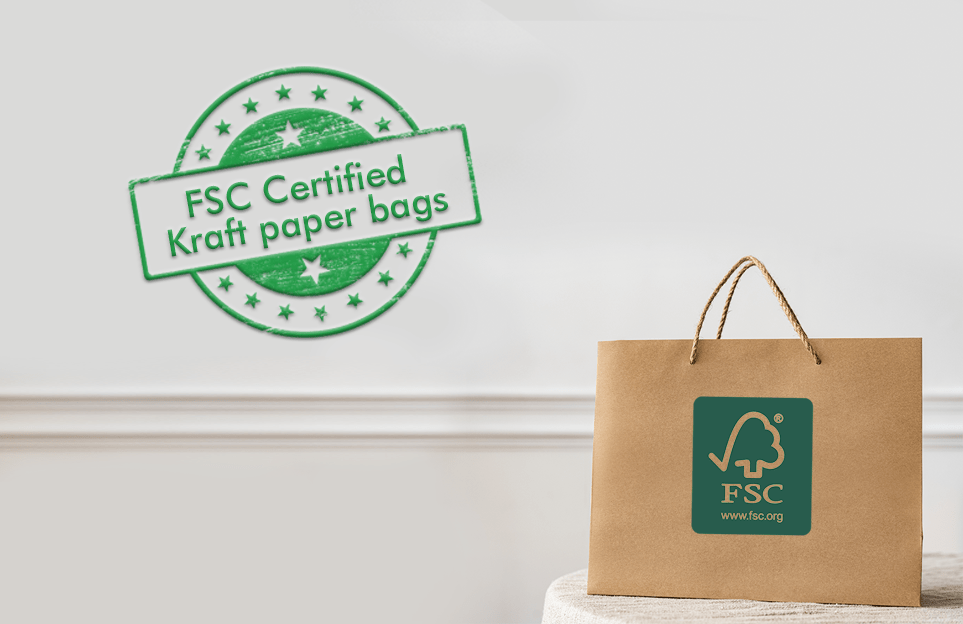Among the various packaging options available, kraft Paper Boxes has emerged as a popular and sustainable choice. This article delves deep into the realm of kraft packaging, exploring its different aspects, benefits, and its significance in building a more sustainable future.

What is Kraft Paper Boxes?
Kraft Packaging refers to the use of kraft paper boxes for creating containers, boxes, bags, and other forms of product enclosures. Kraft paper, known for its distinctive brown color and robust texture, is made through a sulfate pulping process. This process gives the paper its strength and durability, making it suitable for a wide range of packaging applications. It can be used as standalone wrapping material or crafted into complex box designs to safeguard and display everything from food items to electronics.
Regular Paper vs. Kraft Paper
While regular paper and kraft paper might seem similar at first glance, there are notable differences. Regular paper is typically produced using a chemical pulping method that results in a finer and smoother texture. It is often used for printing documents, stationery, and lightweight packaging where strength is not the primary concern. On the other hand, kraft paper, with its coarser fibers and darker hue, is engineered for toughness. The sulfate pulping imparts it with enhanced resistance to tearing and puncturing, making it ideal for heavier and more demanding packaging tasks. For instance, when shipping fragile items, kraft paper boxes offer better protection compared to regular paper boxes.

Benefits of Kraft Paper Boxes
- Strength and Durability: As mentioned earlier, kraft paper’s inherent strength allows it to withstand the rigors of transportation and handling. It can bear the weight of contents without easily tearing or deforming, ensuring that products reach consumers intact.
- Eco-Friendliness: One of the most significant advantages of kraft packaging is its environmental credentials. It is made from renewable resources, usually wood pulp sourced from sustainably managed forests. Additionally, the production process of kraft paper consumes less energy compared to some other paper types, further reducing its carbon footprint.
- Versatility: Kraft paper can be molded and shaped into various forms. It can be folded into simple envelopes, constructed into elaborate gift boxes, or even used as a liner for other packaging materials. Its adaptability makes it a go-to option for businesses with diverse packaging needs.
- Aesthetic Appeal: The natural, rustic look of kraft paper has an inherent charm. It gives products a touch of authenticity and can be enhanced with minimalistic designs or stamps to create a unique visual identity. This is especially appealing for artisanal and organic products.
Color Classifications of Kraft Paper Boxes
Kraft paper boxes come in several color variations, although the classic brown is the most recognizable. There is light brown kraft, which offers a softer, more subdued appearance and is often favored for luxury or delicate product packaging. Dark brown kraft, on the other hand, conveys a sense of robustness and is commonly used for industrial or heavy-duty items. Some manufacturers also offer colored kraft paper, achieved through natural dyes or pigments, to match specific brand aesthetics. For example, a green-tinted kraft box might be used for an eco-friendly product line.
Types of Kraft Paper Boxes
- Kraft Paper Bags: These are widely used in retail, from grocery stores to boutiques. They can have handles for easy carrying and come in different sizes and thicknesses. Grocery kraft bags are designed to hold a substantial amount of items, while boutique bags might be thinner and more decorative, often featuring a logo or a printed design.
- Kraft Paper Boxes: Ranging from small jewelry boxes to large shipping containers, kraft paper boxes can be customized with flaps, inserts, and partitions. They provide excellent protection and organization for products. For instance, a subscription box service might use kraft boxes to send monthly assortments of products, with each item neatly compartmentalized.
- Kraft Paper Wraps: Ideal for wrapping individual items like books, candles, or baked goods. It provides a simple yet effective way to present a product and can be tied with a string or sealed with a sticker for a charming finishing touch.
Kraft Paper Boxes Designs
The design possibilities with kraft paper are virtually endless. Minimalist designs, with just a logo and a few lines of text, can create an elegant and understated look. For more elaborate packaging, embossing, debossing, and foil stamping techniques can be used to add texture and visual interest. Geometric patterns, illustrations, and hand-drawn elements can also be incorporated to make the packaging stand out. For a coffee brand, a kraft box with an embossed coffee bean pattern and the brand name in gold foil would instantly catch the eye.
Printing Techniques for Kraft Paper Boxes
- Flexographic Printing: This is a common method for printing on kraft paper. It uses flexible relief plates and fast-drying inks. It is cost-effective and suitable for large-volume production. It can reproduce simple to moderately complex designs with good color accuracy.
- Digital Printing: Ideal for short print runs and custom orders. It allows for highly detailed and variable designs, as it prints directly from a digital file. This means that each box can have a unique barcode, serial number, or personalized message.
- Offset Printing: Known for its high-quality output, offset printing uses plates to transfer ink to the kraft paper. It can produce sharp images and vibrant colors, making it a preferred choice for high-end packaging with intricate designs.
Inks for Printing on Kraft Paper
Special considerations are needed when choosing inks for kraft paper. Oil-based inks are often used as they adhere well to the rough surface of the paper and provide good color saturation. However, water-based inks are gaining popularity due to their environmental friendliness. They dry quickly and can produce a matte finish that complements the natural look of kraft paper. Pigment inks are also an option, especially for achieving bright and long-lasting colors. For a children’s toy packaging, water-based pigment inks might be used to print colorful illustrations that are safe and eye-catching.
What Makes Kraft Paper Packaging Eco-Friendly?
- Renewable Raw Materials: As stated before, kraft paper is predominantly made from wood pulp, which can be sourced from sustainably managed forests. This ensures that the raw material supply is continuously replenished.
- Biodegradability: When disposed of, kraft paper breaks down naturally in the environment. It does not contribute to the long-term accumulation of waste like some synthetic packaging materials. In landfills, it decomposes over time, returning to the earth.
- Low Energy Consumption: The production process of kraft paper requires relatively less energy compared to plastics and some other packaging alternatives. This means fewer greenhouse gas emissions during manufacturing.
What is FSC-Certified Kraft Paper?
FSC (Forest Stewardship Council) certification is a globally recognized mark that indicates the kraft paper has been sourced from forests that are responsibly managed. These forests meet strict environmental, social, and economic criteria. When businesses use FSC-certified kraft paper, they are sending a signal to consumers that they support sustainable forestry practices. It also helps in meeting the growing demand for ethical and green products. For example, a cosmetics company might choose FSC-certified kraft paper for its product boxes to align with its sustainability goals.

What Do Consumers Think of Sustainable Packaging?
Increasingly, consumers are becoming more aware of the environmental impact of packaging. Surveys show that a significant portion of consumers are more likely to purchase a product if it comes in sustainable packaging. They perceive it as a sign of a company’s commitment to the environment and social responsibility. For millennials and Gen Z, in particular, sustainable packaging can be a deciding factor in their purchasing decisions. They appreciate the use of materials like kraft paper that reduce waste and have a lower ecological impact.
Kraft Paper Market Updates and Trends
The kraft paper market has been witnessing steady growth. With the rise in e-commerce, the demand for kraft paper boxes for shipping and packaging has surged. Additionally, the food and beverage industry is increasingly adopting kraft packaging for its natural and preservative-free image. Technological advancements in printing and manufacturing are allowing for more innovative and cost-effective kraft paper packaging solutions. In the future, we can expect to see more intelligent packaging using kraft paper, such as packages with embedded sensors to monitor food freshness.
Build a More Sustainable Future with Kraft Paper Packaging
In conclusion, Pengkai Packaging’s kraft paper solutions are a win for sustainability. They’re strong, protecting goods well, and versatile for unique brand looks. Environmentally friendly too, matching the green trend. Eager to upgrade? Contact us on WhatsApp +86 15017909850 for a quote and step into a greener business future.

